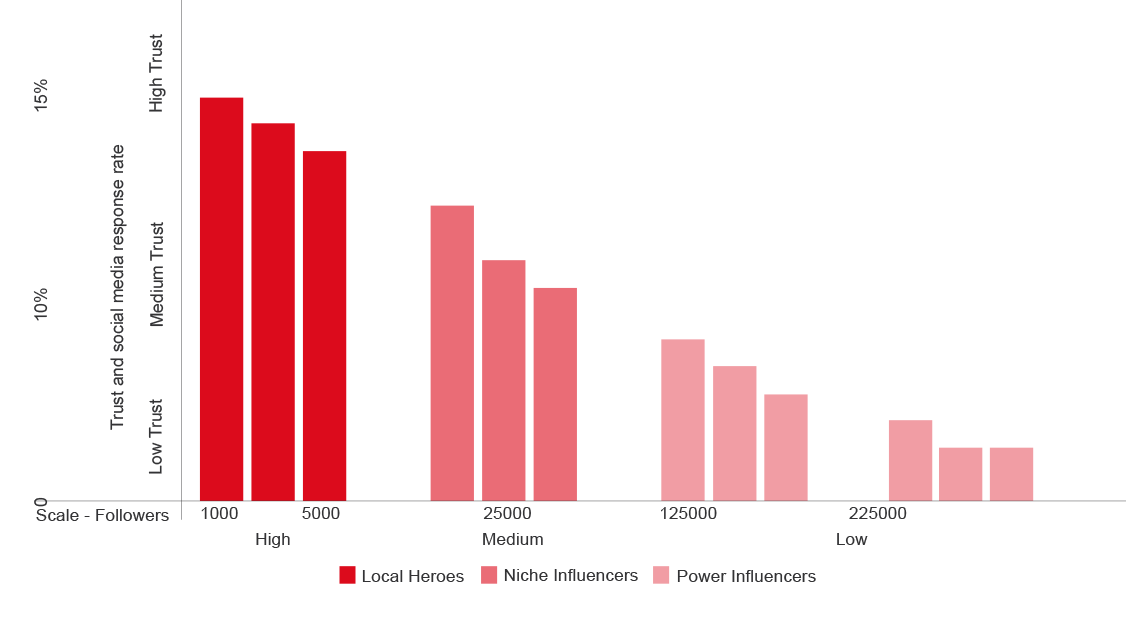The storm clouds are rumbling, the end of influencer marketing is nigh – or so some of the headlines would have you believe.
But they are very, very wrong.
It all stems from a misunderstanding that many in the industry have been outlining for a while. Paying a large-scale influencer to do a post is often not the right strategy for brands. It can be good for awareness and aspiration, but it’s often not authentic and can be the worst kind of blunt advertising – add in some fake followers and the results can be disastrous.

Strategic influencer marketing however isn’t about scale, it’s about trust and response – finding the right influencers to deliver the response you need. In influencer marketing, trust is inverse to scale, – i.e you might aspire to live the lifestyle of a power influencer like Kendall Jenner, but you trust your friends and colleagues a hell of a lot more, and as such, you respond to their purchase recommendations more closely than a mega-star like Kendall.
The ‘Influencer Trust Continuum’ infographic below aims to explain this theory. Large scale influencers do have their uses but are generally not good for building trust or delivering sales for companies (apart from in a few specific categories) and their branded posts are often not seen as authentic – unless they are part of a larger and more meaningful strategy.

People often think that all influencers are “supposed” to be authentic and if that’s proven wrong, the whole industry will collapse. I think this belief is a result of a misunderstanding about what motivates us as humans to follow influencers. The 16-year-old sister of my friend wants to be like Kendall but she wouldn’t trust her with any big life decisions or even believe her opinion on anything apart from the superficial.
Dress like Kendall? Sure. Ask her her opinion on anything important? Hell, no.
The ‘Influencer Trust Continuum’ outlines how trust and response degrades as scale increases and references, it classifies “Local Heroes”, “Niche Influencers” and “Power Influencers” to help explain the eco-system brands are entering and the various uses and attributes of each.
Need a refresher on the different types of influencers? Check out my recent blog post on the three main types and which type is right for your brand.
The hope is that by splitting influencers into different categories and understanding what they’re best used for, it will help the industry and brands to deliver better and more responsive Campaigns, and that’s nothing but a good thing.
In the end, my belief is that as data becomes ubiquitous and AI helps us to sort that data, smart marketing will be about understanding who influences whom and in what capacity, and then engaging those networks to deliver the response needed.
In the end every marketing campaign will feature influencer marketing and we will all be influencers – it’s inevitable!
Learn more about creating impactful influencer campaigns for your brand. Or check out the influencer experiences we’ve done for brands like The Burj Khalifa, Vans and Yorkshire Tea.